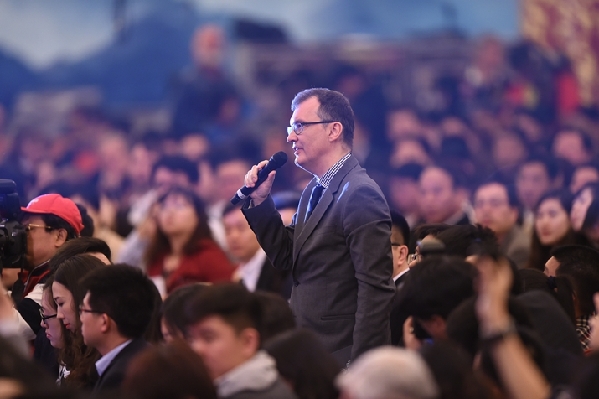Hopes outweigh difficulties in China
- By Ding Yuanzhu
 0 Comment(s)
0 Comment(s) Print
Print E-mail China.org.cn, March 21, 2016
E-mail China.org.cn, March 21, 2016
|
|
|
Journalists at Premier Li Keqiang’s press conference [Xinhua] |
Chinese Premier Li Keqiang admitted at a March 16 press conference that China's economy is indeed facing increasing downward pressure, resulting from the world's sluggish recovery and the country's own economic transformation. But, judging from its economic foundation and developing trends, hopes still outweigh difficulties in China.
China's growth rate is slower now than it was three decades ago, when the reform and the opening-up were set into motion, because the driving forces for growth - size of economy, environment, resources, and demographic structure - have changed. With slower growth taking over as the new normal, one should lower expectations accordingly.
By the end of 2015, China's GDP had reached 68 trillion yuan (US$10.43 trillion), 180 times more than 1978's GDP of 365.02 billion yuan (US$56.07 billion). For an economy of this size, the old development model characterized by high growth rate and a heavy reliance on resources, the environment, and ecology, cannot continue to sustain itself.
Prof. Andrew Spenser at New York University, the 2011 Nobel Laureate in Economics, said that long-term growth is fueled by technological progress. Developing countries lag behind in science and technologies and don't have to develop their own during the initial stages of development; instead, they can borrow from developed countries. Once they have to develop their own technologies, however, it is natural that their growth rate will drop.
As for energy consumption, China burned 571.44 million tons of standard coal in 1978 and 4.26 billion tons in 2014, 7.5 times more over a 37-year span. This increase, along with a growing number of cars, led to heavy smog, which has now become a prominent social issue. Such an energy-intensive approach to development is inevitably unsustainable.
In terms of demographic structure, since 1978 China's population has swelled by more than 400 million, an increase greater than the entire population of the United States. In 1982, people older than 65 made up 4.9 percent of the entire population, and this proportion rose to 10.1 percent in 2014, signifying that China is becoming an elderly society. Along with such changes, natural population growth rate is dropping and the demographic dividend diminishing.







Go to Forum >>0 Comment(s)